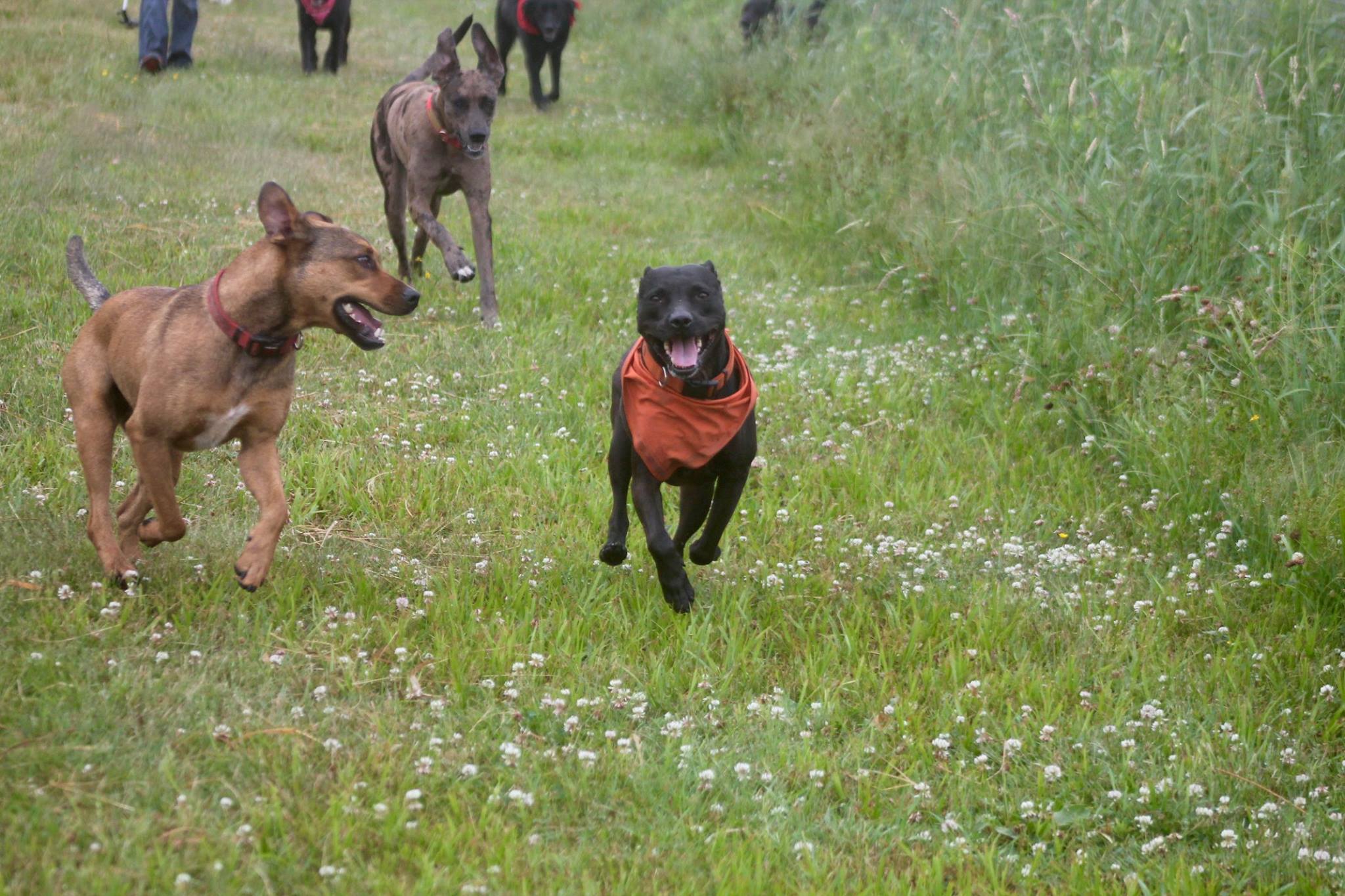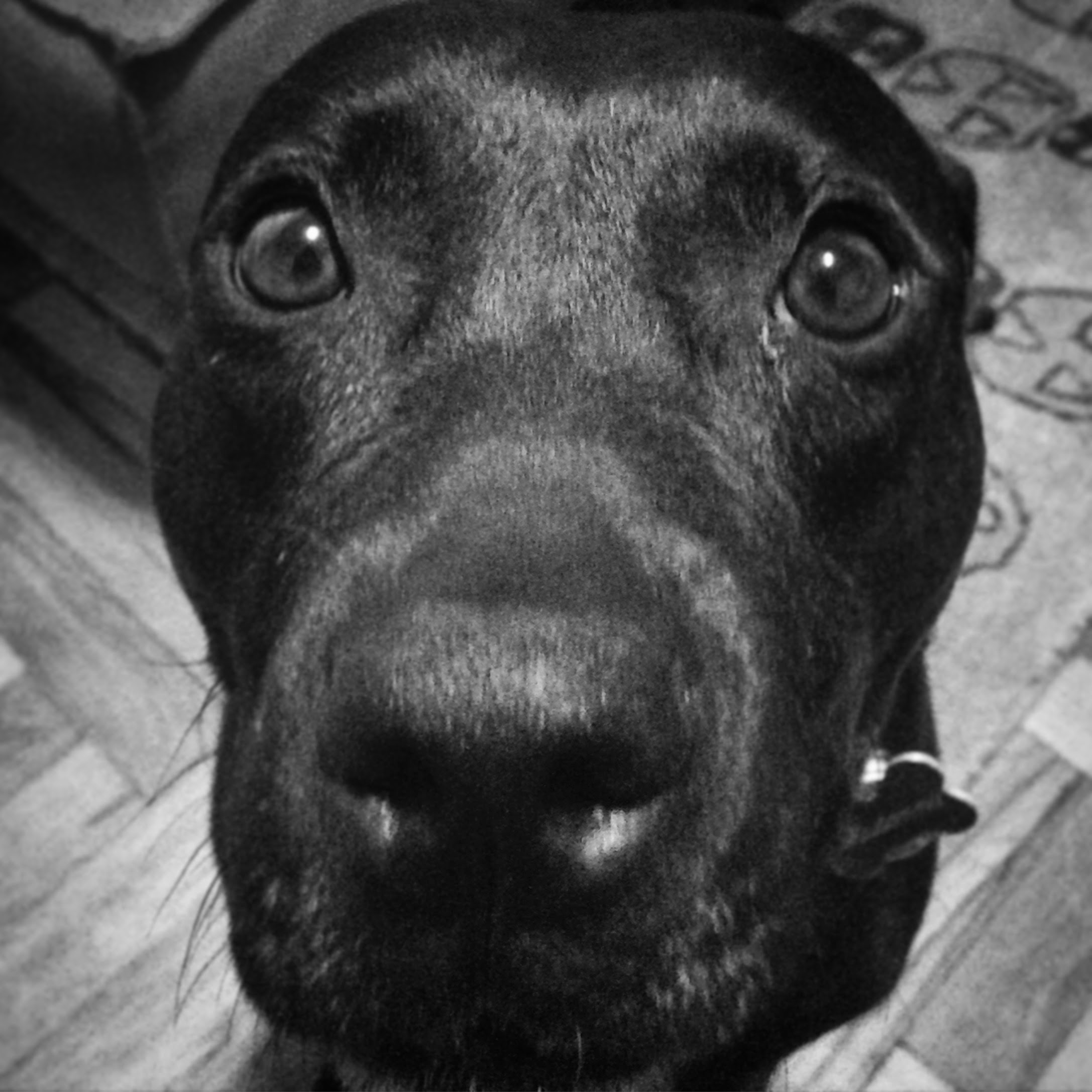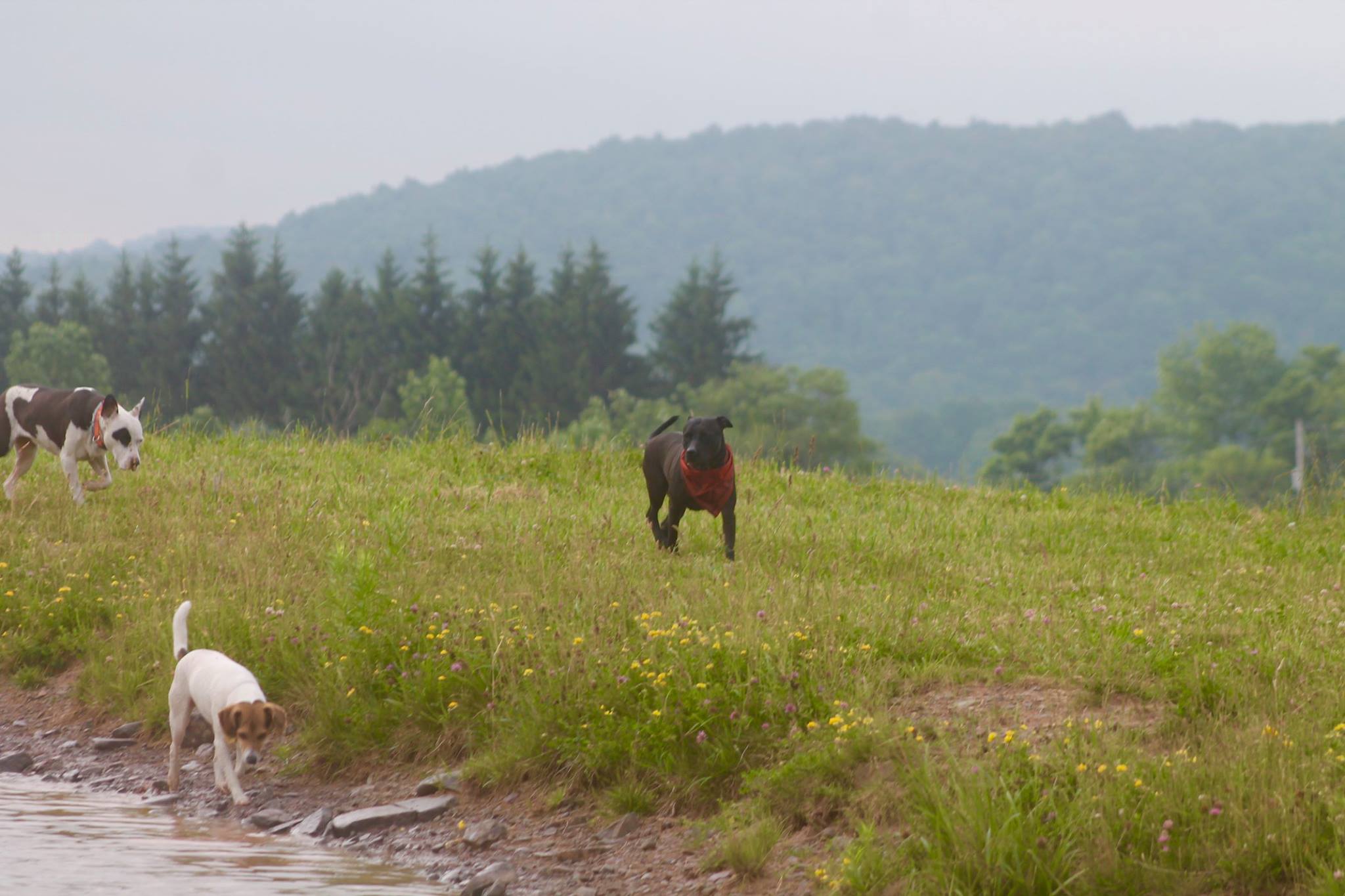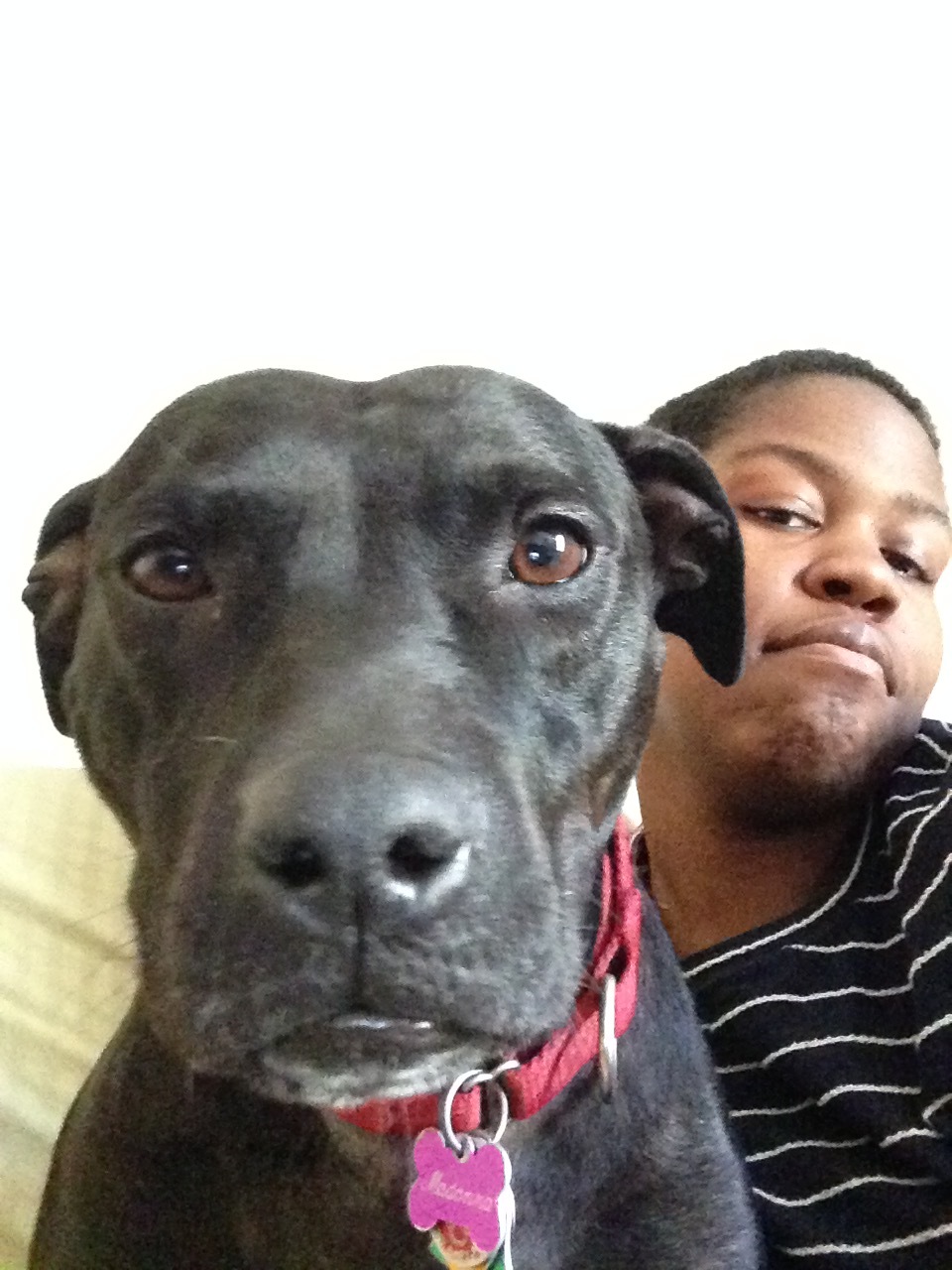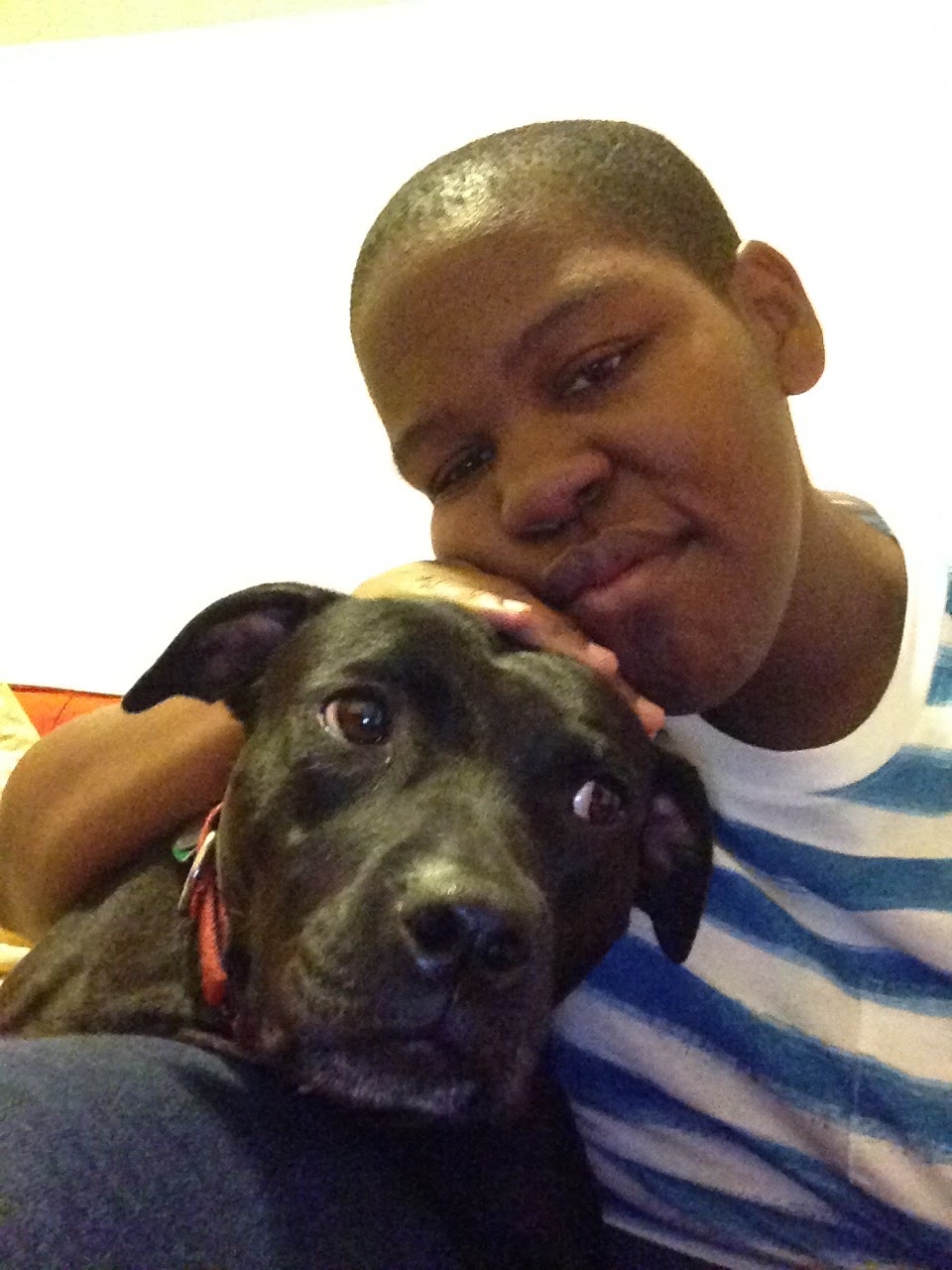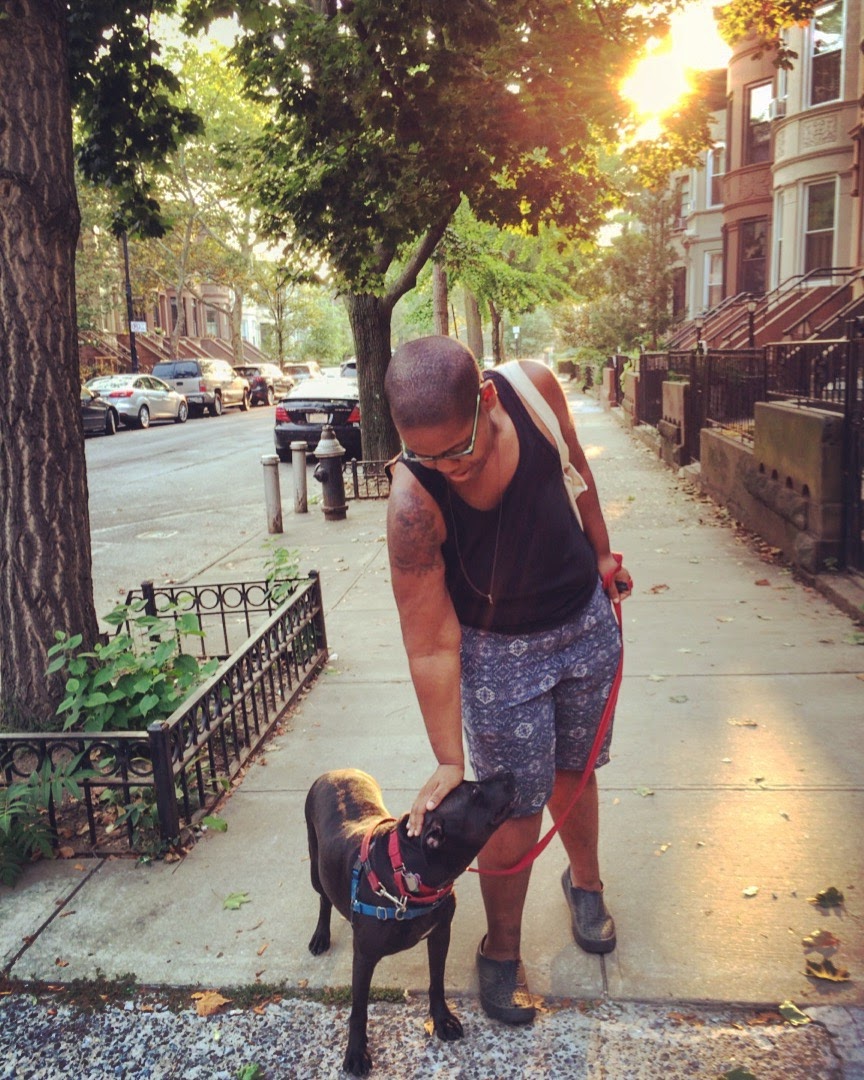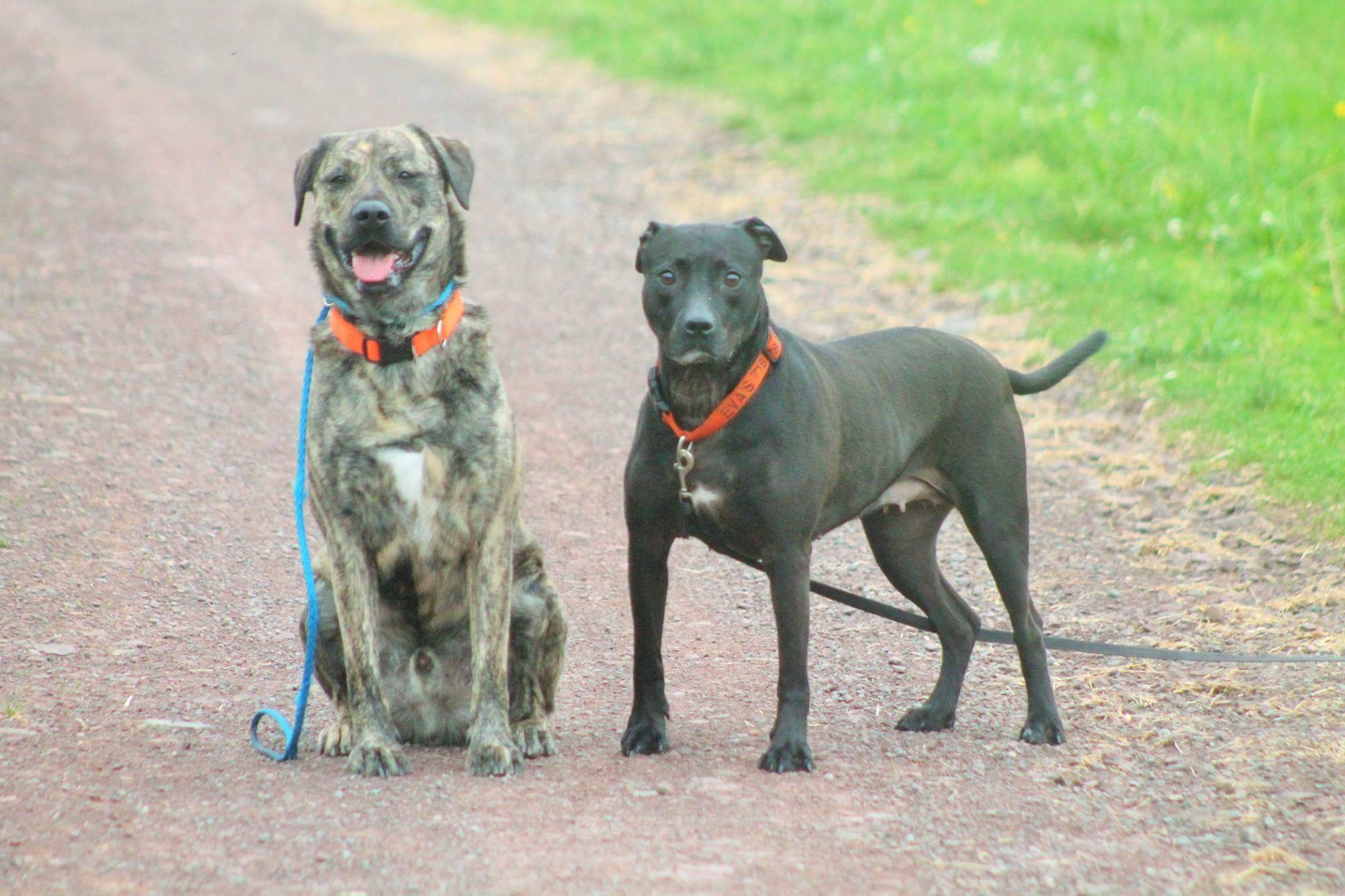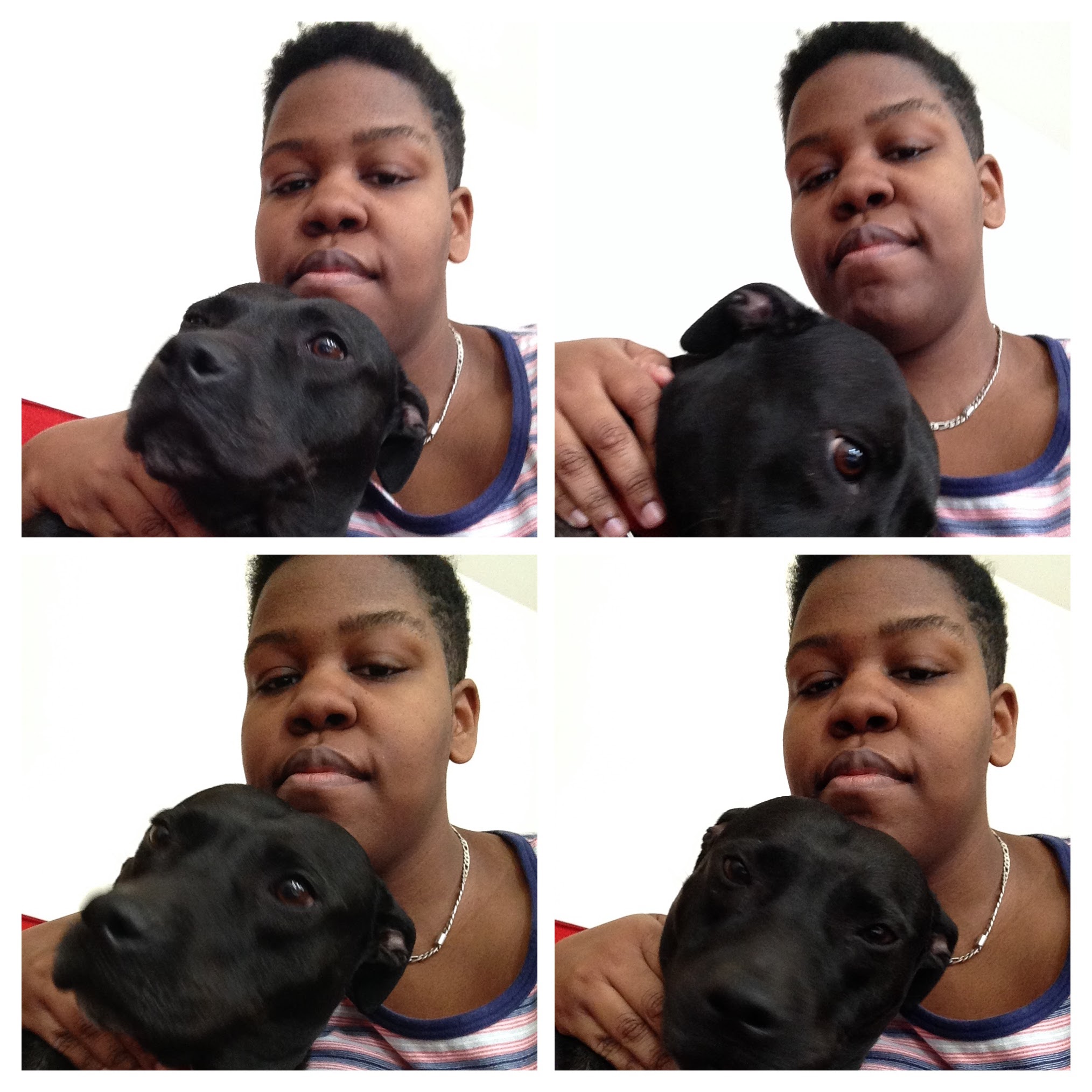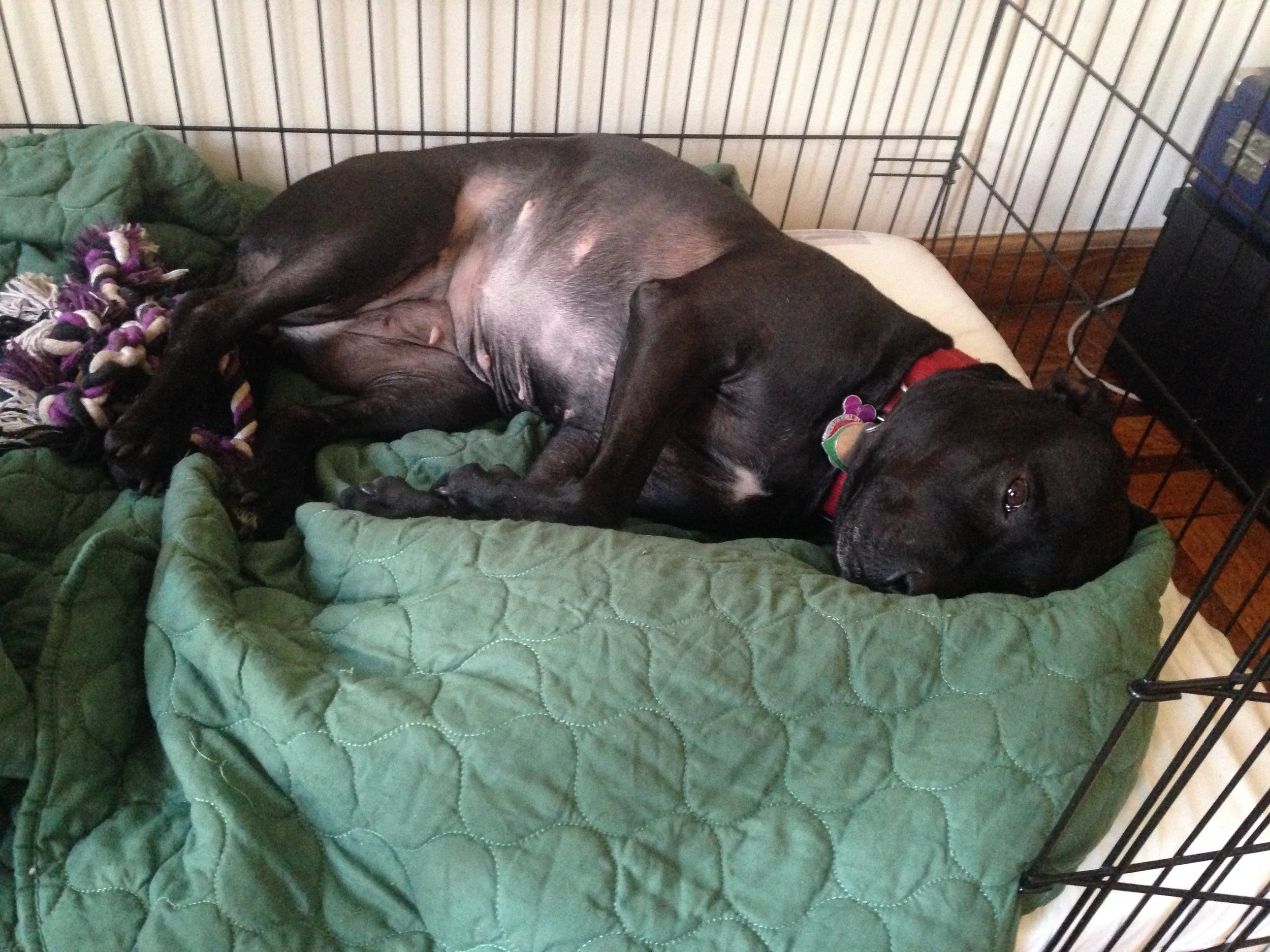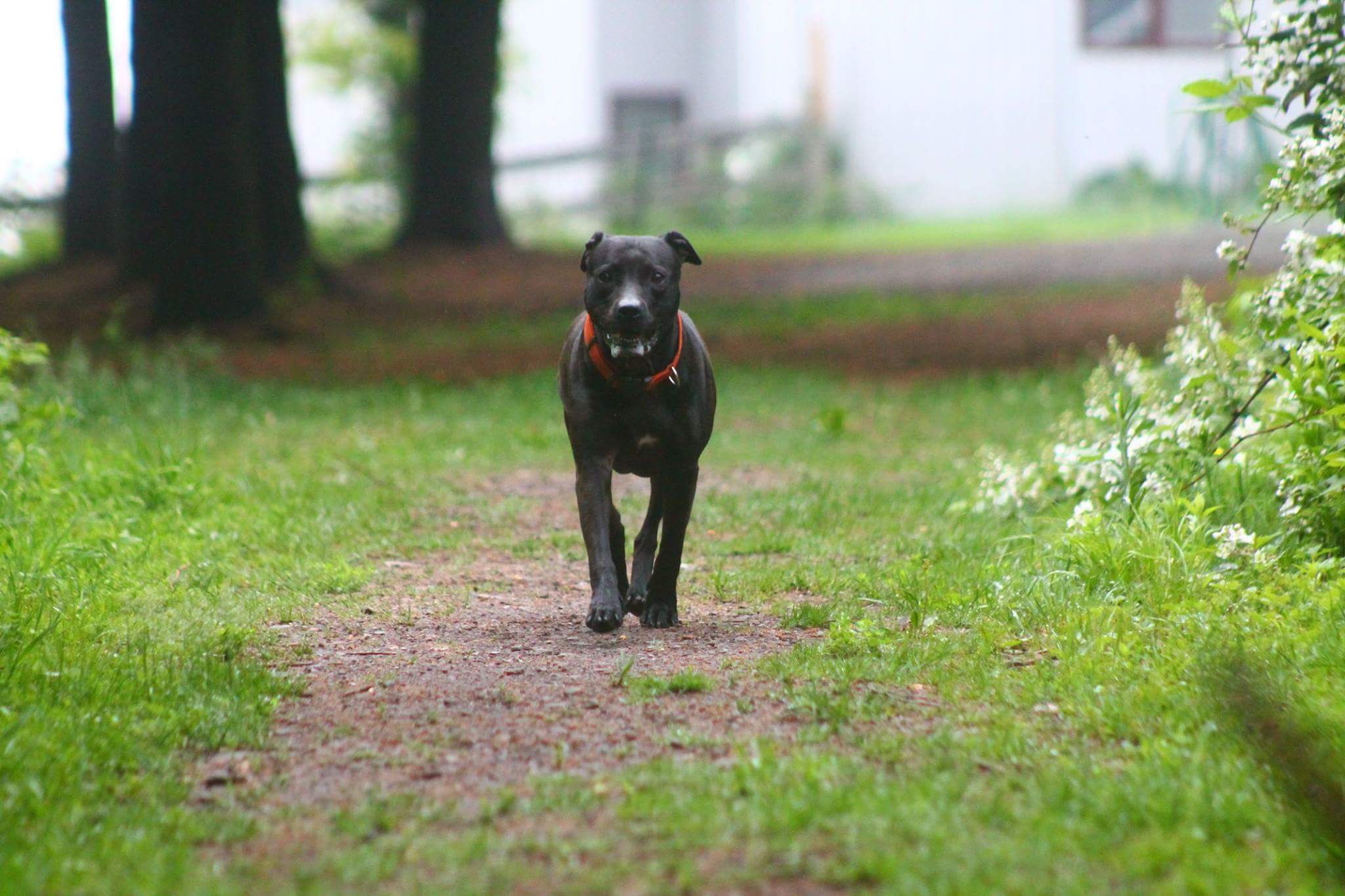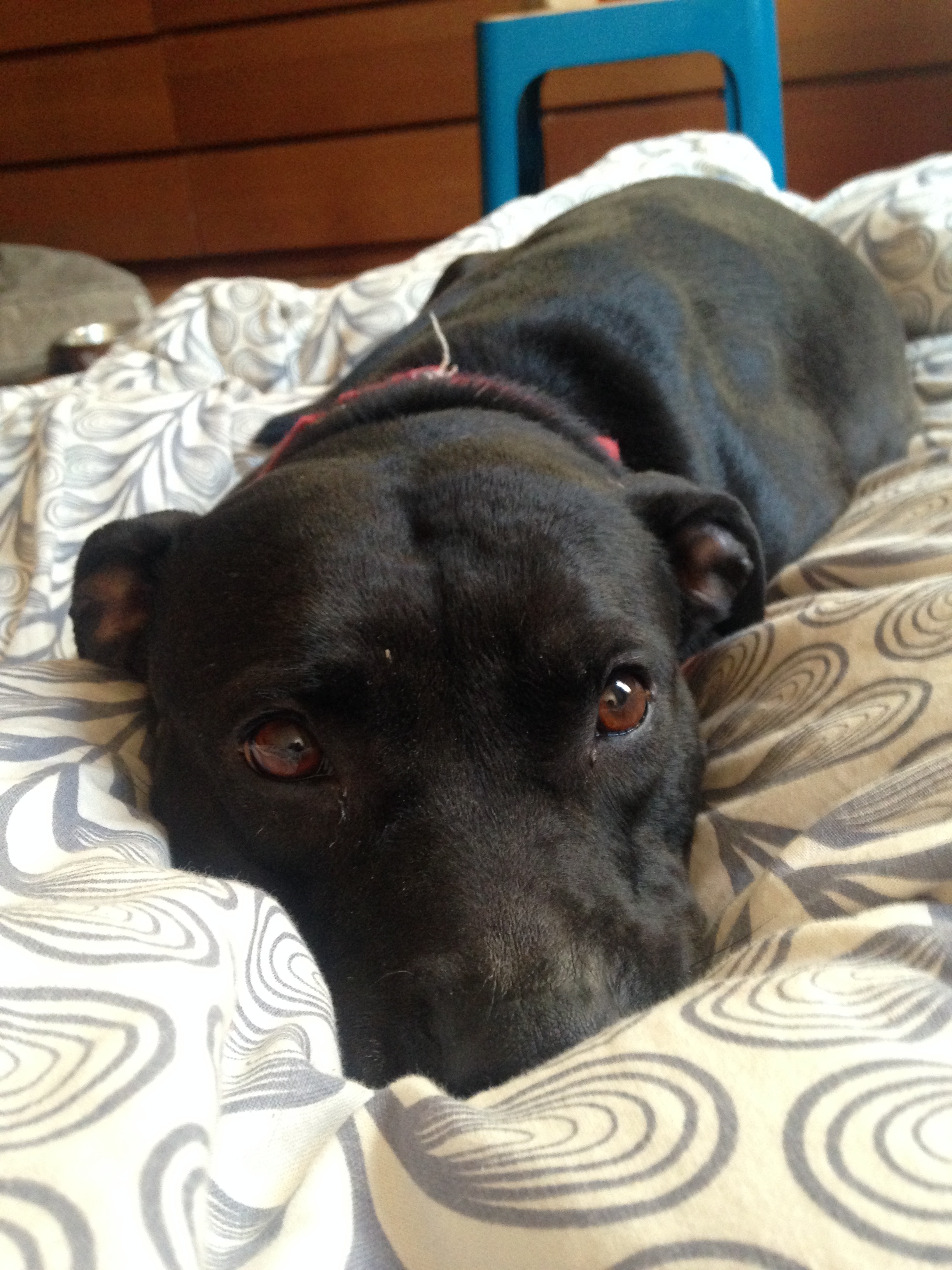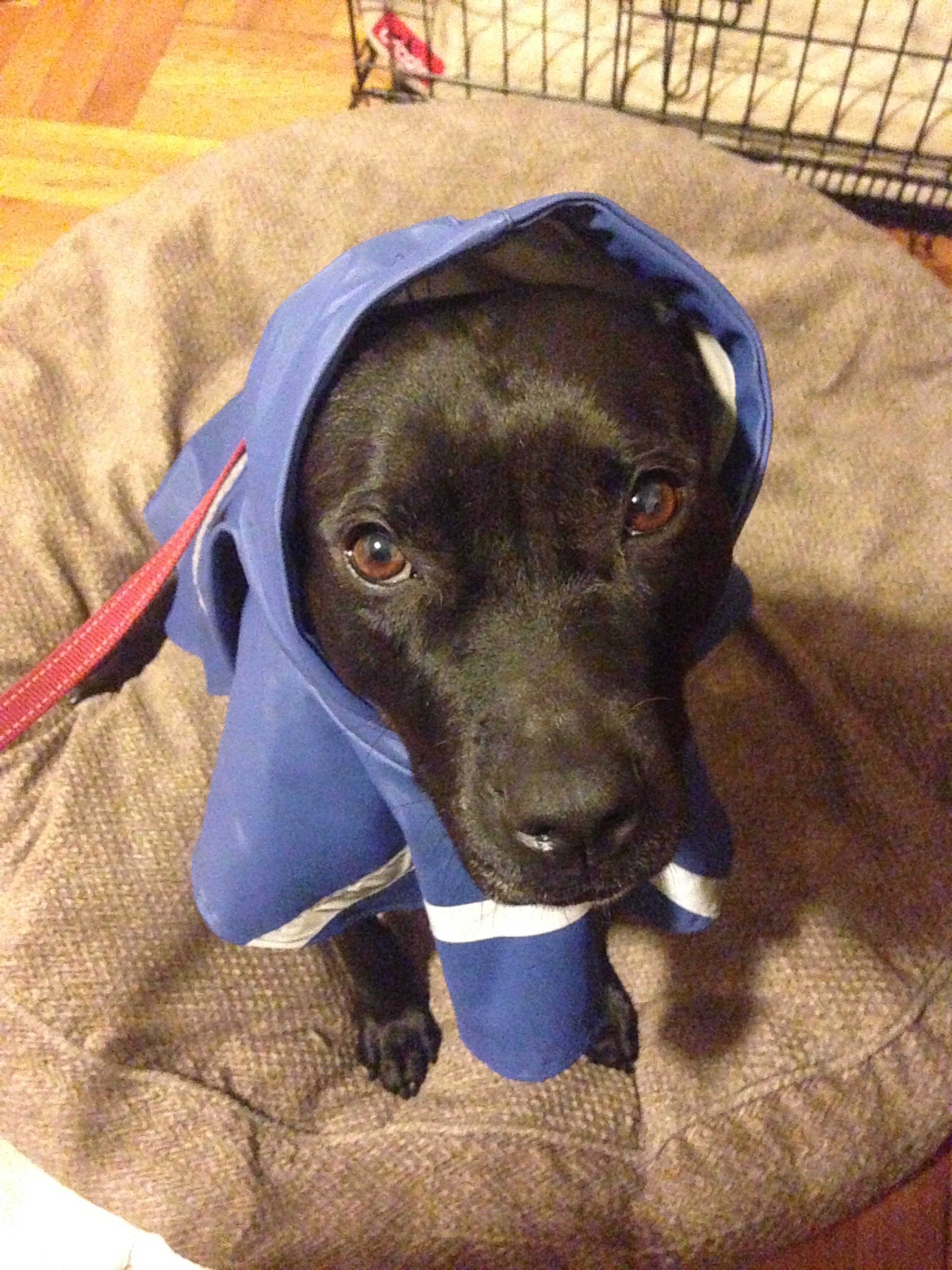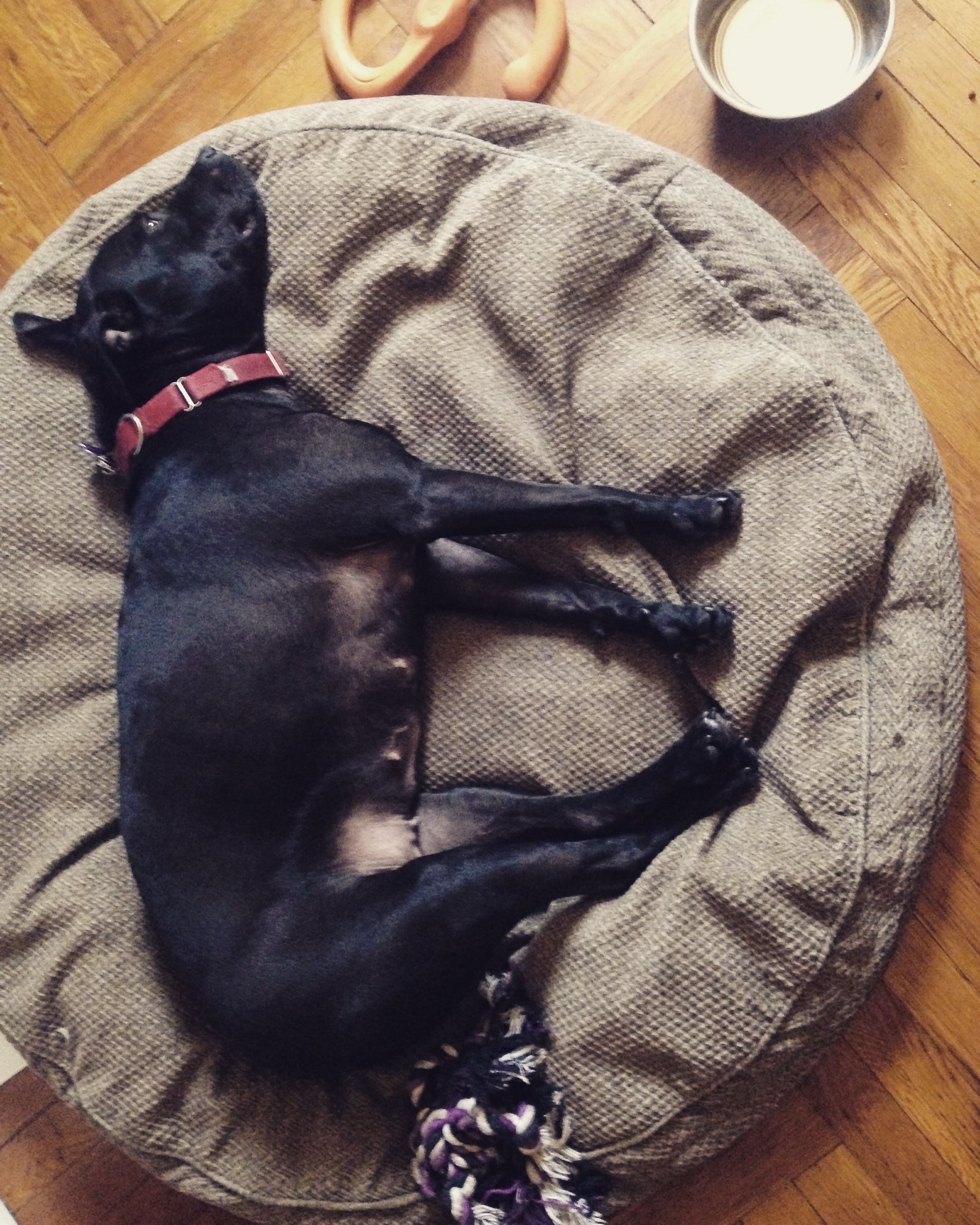Candace Williams: The Art of Looking
There are 3 million reasons to admire Candace Williams (though this is a rough estimate – let's allow for a deviation of plus or minus two percent), but I want to focus on one today: her watchful eye. It's evident in her poetry and in her care for her rescue pit bull Madonna. It's all over this interview, and I want to celebrate it.
On her walks with Madonna around Crown Heights, Candace's eye is tuned to her surroundings. She notices "the routines and residue," the history of trauma and oppression that hide behind the shiny veneer of recent development. In her poetry and life, Candace does the necessary work of observing – and hopefully, we are smart enough to take notice, too.
Before we hear Candace talk about Madonna, class, routine, and self-care, here's a little background: Candace Williams is a black, queer nerd leading a double life. By day, she’s head of community operations of a podcasting startup. By subway ride and lunch break, she’s a poet. She's a Brooklyn Poets Fellow and her work has appeared or is forthcoming in Sixth Finch, Lambda Literary Review, Bennington Review, Copper Nickel, No, Dear, and elsewhere.
In a two-night run of Ghetto Hors D’oeuvres: COLORS, she collaborated with music, theater, and film artists to perform “Crown Heights” and “Commute” on stage. She’s been a featured reader at the New York City Poetry Festival Couplet reading, Union Square Slam, and other events.
In a past life, Candace was a K-5 science, robotics and comic book writing teacher in the South Bronx. She earned her MA in Elementary Education from Stanford University and graduated cum laude with a BA in Philosophy, Politics and Economics (PPE) from Claremont McKenna College. She's participated in Cave Canem and Brooklyn Poets workshops. On an average day, you’ll find her cuddling her pit bull Madonna and tweeting a little too often.
Tell me about how Madonna came into your life.
Madonna was rescued from a church basement by the ASPCA. She spent the first three years of her life there and then had to stay with the ASPCA for close to a year so they could treat her heartworm and start to alleviate some of her anxiety. She was incredibly fearful of humans (she would cower under furniture and couldn't go outside).
At first, they didn't think I should take her because she would be my first dog. After about seven hours of looking at other dogs and talking to their behaviorists, they let me take her.
It was pretty rocky at first. She wouldn't go outside at all and was very afraid of me. I learned how to do clicker training and got her to touch my hand and go to her crate. Once she had that safe space and a way to choose to explore new places with me, the training was a bit easier. She went outside with me for the first time four weeks after I adopted her. Now, she's a much happier dog. She even spends time swimming, hiking, and playing with other dogs at a dog camp when I travel.
Confession: I’ve never been more grateful for an Instagram hashtag than I am for this one: #madonnatherescuepitbull. Your love for Madonna is evident even in the way you photograph her – you can tell she’s never far from your side. What moves you to chronicle this relationship?
Looking is an important and radical act. I peer at and write about personal and social trauma. I’ve realized it’s just as important to document comfort and joy. Also, SHE’S SO CUTE!
“Looking is an important and radical act.”
Candace and Madonna
Let’s talk about your poem “Crown Heights” where Madonna makes a cameo:
…She puts
her pit bull into coat and boots. They do
their morning routine—heading west on Crown
to Rogers; turning right and buying sweets
near President; going east to Nostrand
and walking back to Crown. She walks the heart
of Crown Heights. She walks the ghost perimeter
of Crow Hill Castle—named after murders
of crows that flocked to trees atop the hill;
or darkies lined up on the hill like crows;
or the louring inmates dressed in crow black.
You mentioned in our pre-interview banter that Madonna’s presence here has “links to class, comfort, and routine.” Would you elaborate on these ideas?
I made the decision to adopt Madonna when I achieved stability in Brooklyn. She adds a lot of structure to my life and anchors my decision-making (I spend less nights out and about and more nights reading in bed). I wanted my first poem about Crow Hill Castle to compare my privilege and comfort to the horrors that happened where I now live, sleep, and walk Madonna.
That walk you take with Madonna in “Crown Heights” gives you the opportunity to, as you said, “transport my audience to Crow Hill Castle,” the site of a former penitentiary in Brooklyn. It’s a craft choice that feels so necessary when talking about the history of a place and how gentrification tries to pave over that history. So my question is this:
True or false: it’s a poem’s job to gets its readers’ hands dirty.
False. The only person that can get readers’ hands dirty are readers themselves. One of my jobs as a poet is to spark curiosity in my readers so they attend to what’s on the page and integrate that experience into their conscious life.
“One of my jobs as a poet is to spark curiosity in my readers so they attend to what’s on the page and integrate that experience into their conscious life.”
Photo courtesy of Eva's Play Pups Countryside Dog Camp
In addition to “Crown Heights,” your poem “John Henry Suffering and Dying in the Arms of His Polly Ann After a Ventricular Rupture Resulting from Overwork” is also written in blank verse. A taste for our readers:
I drove through slag and ore so men could move
the Coosa Mountain, God not seen. I fought and won
and found no prize because this work is not the will of God.
The will of God is not the greed of gluttons—masters who
are now the captains….
What draws you to this form, and when do you decide whether or not to tackle a poem in blank verse?
I wrote “Black Sonnet,” “Crown Heights,” and “John Henry Suffering…” in March while I participating in two concurrent workshops with Jason Koo— Blank Verse at Brooklyn Poets and Fast Break: Capturing the Motion of the Mind at Cave Canem. I think blank verse is good for hitching the reader on your back as you push through a thought, memory, or scene.
I’ve always loved the narrative momentum of Shakespeare’s dramatic monologues and the gravity of Robert Hayden’s “Middle Passage.” I had been researching John Henry and Crow Hill Castle for months and couldn’t find the right form for my first works about these somber, sprawling subjects. I’m still experimenting with blank verse and figuring out when it does and doesn’t work.
“Blank verse is good for hitching the reader on your back as you push through a thought, memory, or scene.”
Photo courtesy of Eva's Play Pups Countryside Dog Camp
I want to talk about “Black Sonnet” because I deeply love this poem. A couple lines:
I make the right slight right and I’m still black.
I ring the bell twice and I’m still black.
My love smiles with her eyes and I’m still black.
We kick it for a bit and I’m still black.
I turn off all the lights and I’m still black.
Can you talk a little about the choice to set up moving through daily life and being black as a dichotomy?
I used anaphora and meter to create a sense of inevitability and exasperation. I wanted to show that folks under siege accumulate privileges and accomplishments but still pay a tax for our identities. Little Aiyana Stanley-Jones, Rekia Boyd, and Islan Nettles paid the ultimate price. I’ve been stopped and frisked in Chelsea while wearing a bow tie and suit. I’ve been followed on the streets of New York, New Delhi, and Xi’an. I’ve looked a little too queer on Nostrand. Too black to be that “kind, well-spoken person on the phone.” Too black to spend a day at my coworking space without people asking, “Can you clean the bathroom/office/kitchen when you get a chance?”
“Folks under siege accumulate privileges and accomplishments but still pay a tax for our identities.”
Candace and Madonna
What poetry projects are you working on now?
I’m collaborating with printmaker Laimah Osman on a “Black Sonnet” broadside. I just finished a chapbook manuscript and am developing a full-length work. I’ve started the process of documenting official and community monuments in Crown Heights—everything from street signs to statues and dangling sneakers. I’d like to explore the monuments that have been built and the ones we haven’t built yet. I’m collaborating with a film and performance artist to imagine more monuments. I’d like to invite my neighbors to participate as well.
Back to Madonna – has your writing process changed since taking her in?
I didn’t start writing poetry until after I took in Madonna (fall 2015). Adopting Madonna helped me have a sense of emotional comfort that allows me to see, process, and write. She snoozes next to me while I write poems and is very attentive audience when I read them aloud. Taking care of Madonna is part of my self-care regimen. Without her, it would be hard to create the intellectual and emotional space to write.
“Taking care of Madonna is part of my self-care regimen. Without her, it would be hard to create the intellectual and emotional space to write.”
Has caring for Madonna changed the way you see or interact with the world? If so, how does that translate into your poetry?
Before I adopted Madonna, I spent more time out and about in the city. She anchors me at home. It’s why I’ve started to explore Crown Heights in my research and work. I spend more time walking the streets of Crown Heights, Prospect Lefferts Gardens, and Flatbush. I notice the routines and residue.
Fill in the blank: Madonna is most likely to appear in a poem about…
Peanut butter. Or cream cheese.
A simile for Madonna?
Madonna is chicken like chicken.


